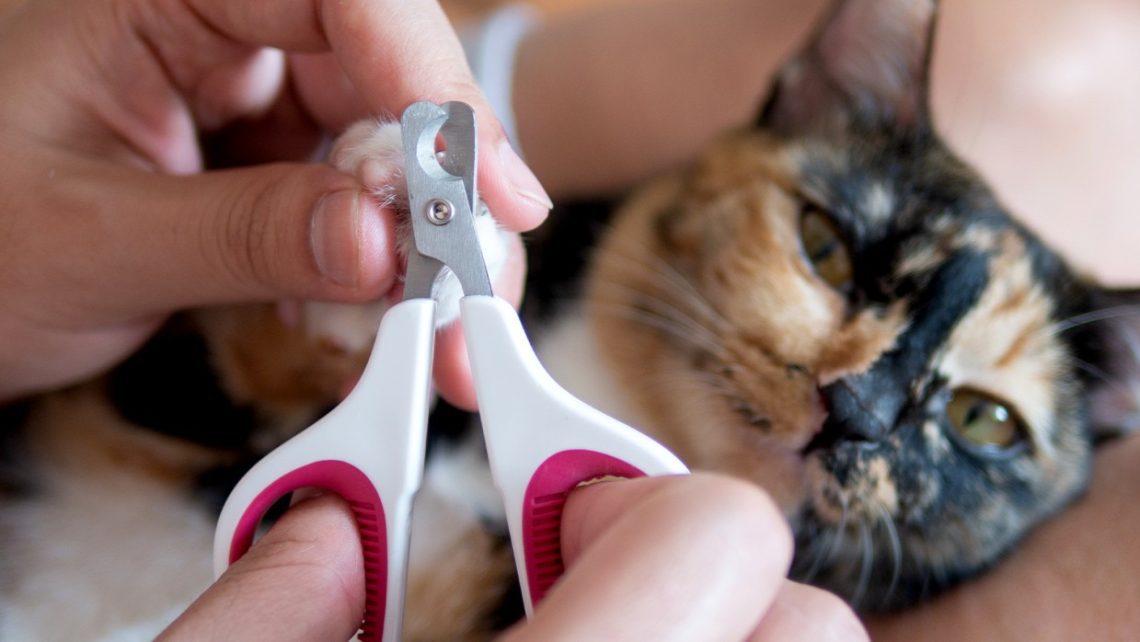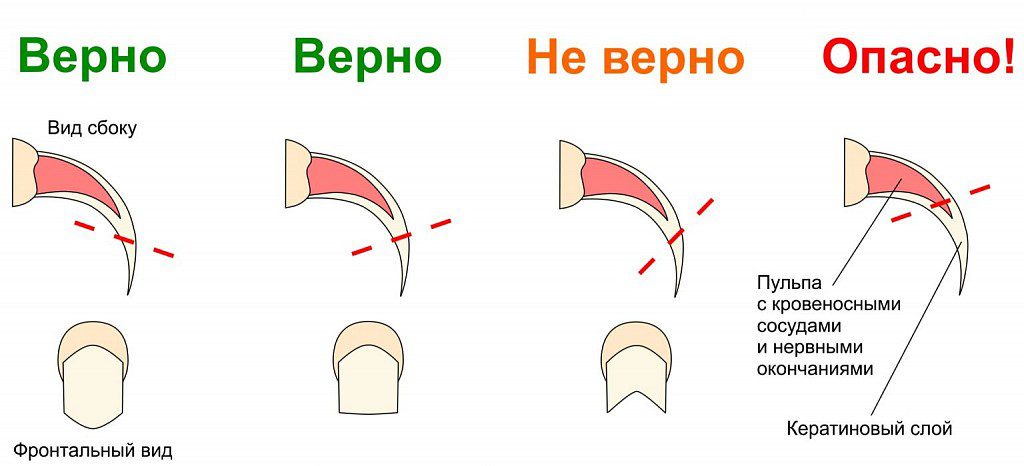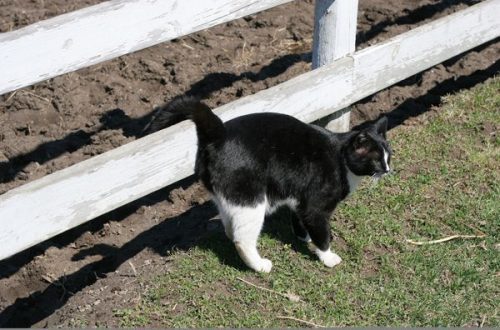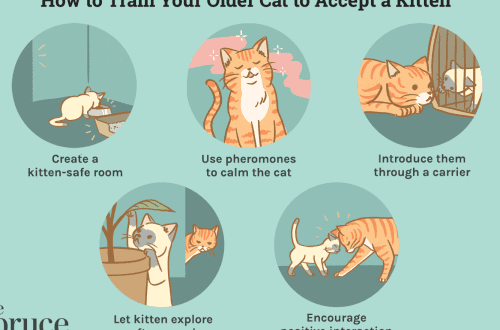
How to trim your cat’s nails at home
Contents
Why does a cat need a “manicure”
The cat’s hard sickle-shaped claws, growing and renewing throughout its life, are its formidable weapon, as well as a useful tool that allows you to storm trees and other heights. In their natural environment, animals have many opportunities to wear down their claws, making it easier to renew them. At home, the cats have no choice but to be satisfied with a scratching post, wallpaper, door jambs, curtains, carpets and, of course, upholstered furniture, which, in their opinion, is simply created for sharp claws to stick into it.
Tearing soft surfaces is rather a pleasant pastime for a cat. It does not provide any grinding of claws, nor their shortening, and the animal has to experience discomfort, casually clinging with “scratches” to all objects suitable for this. Sometimes a kitty cannot even free its paw on its own, and then plaintively cries for help.
It is dangerous to play with a pet armed with long, sharp, curved claws. The first ones to suffer from them are, of course, children. No need to think that the main threat comes from the front paws of the cat. The claws on the hind, jogging, paws, although they grow more slowly, are stronger and tougher. It is with these “daggers” that a pet that has played out can inadvertently inflict the most dangerous and deep wound.
In short, regular trimming of cat’s claws eliminates or minimizes many problems. This procedure will require patience on the part of the owner, and also a lot of time, because you need not just cut off the curved tips of the claws. You will have to follow a certain technique, know at what angle to hold the tool, how to ensure the safety of the “operation”.
When and how to train a cat to trim its claws
It is desirable to accustom a cat to cutting claws in childhood. Then you can expect that, having matured, she will behave quite humbly during the procedure. But until the kitten is at least a month old, there is not much point in such a science. The “scratches” of the baby are still tiny and small, they are easy to damage, and in the first weeks of life, he mostly sleeps and eats. Then you can carry out 2-3 symbolic procedures to prepare the cat for a full-fledged “manicure”. It can be done when the pet is 3 months old. By this time, the claws will noticeably harden and become sharp.
It is more difficult to accustom an adult cat to trimming its claws. However, she will eventually get used to this manipulation, although she will not behave like a lady in a nail salon, she gives her hand. Regardless of the age of the animal, he will have to be persuaded to cut his claws, forgetting about brutal coercion. If the pet hisses and breaks out of the hands not formally, but demonstrating real anger or extreme fear, the procedure should be postponed.
First of all, you need to choose a time suitable for the “operation”, when the cat is in a complacent, calm state. This is how he usually looks after sleep or after a solid portion of food. The purr needs to be put on his knees, caressed, started a conversation and gently taken by the paw. Massage it, imperceptibly getting to the pads. Then lightly press down on them so that the claws come out.
If you yourself are not experienced, take a good look at the claw to understand where the boundary of the pulp containing the blood vessel and nerve passes. Under no circumstances should she be touched. Injury to the pulp will cause pain to the cat and is fraught with bleeding. You can cut off only the bent transparent part of the claw, stepping back from the pulp by 2 mm. Inside the light claw, the pink pulp is clearly visible, but inside the dark claw, it is almost impossible to determine the problem area. You have to shorten the claws by touch, cutting them 1 mm 2-3 times.
Stroking the cat pads with one hand, take the nail cutter with the other. If the cat is interested in the tool, let him sniff it and make sure that it is not an enemy. You can start cutting yourself if the cat favorably tolerates manipulations with its pads, allows you to bare its claws, in a word, expresses its trust in you.
What is required to shorten the claws
For the procedure of cutting the claws of a cat, you need to prepare a certain arsenal of tools and tools. Everything you need should be at hand so that you do not have to be distracted in search of the item you need at the most inopportune moment. The debut “operation” is usually associated with special troubles. They concern, as a rule, the selection of a suitable tool for cutting cat claws.
It is clear that kitchen and stationery scissors are not suitable for the successful implementation of a delicate procedure. As for the use of nail scissors, then it is in doubt. Firstly, it is not very convenient to use them: the blades in such tools are not designed to cut a dense, round claw, which is why they constantly slide off. Secondly, for cats who do not want to freeze for the duration of the “operation”, the sharp tips characteristic of most nail scissors can be dangerous. For those who are absolutely confident in their skills, and at the same time their pets are distinguished by humility, it remains to be reminded of hygiene. “Human” manicure scissors cannot be used to cut cat claws. For the animal, you should purchase your own tool.
It is most convenient to use special scissors – nail cutters, which are offered in specialized stores for animals and on the Web. They are distinguished by a peculiar design with reinforced edges of the blades. With the help of nail clippers, the hard claws of a cat can be trimmed quickly and painlessly. It is advisable to purchase a tool with rubber grips on the handles, since the palm often slips off smooth surfaces.
There are various modifications of nail cutters, so you can experiment before finally choosing the most comfortable option for you and your pet.
Nail cutters are represented by several basic models.
- Nail clippers. In its shape, the tool resembles ordinary scissors, but the blades are not straight, but curved at the ends. Rounding, they form cutouts in the form of holes with a sharp edge, where the claw is inserted. When closing the blades, it is easily removed.
- Guillotine nail cutters. This highly sought-after tool today operates on the principle of the infamous invention of Monsieur Guillotin, used for decapitation. The cat’s claw is inserted into a special hole, and its excess, from the owner’s point of view, is cut off with a blade. The mechanism actuates a lever on a spring.
- Nail clippers. A convenient device with rubberized thick handles resembles a metalwork tool. The claw is inserted into the crack between its cutting edges with sharp blades and is literally bitten off by them when the handles are squeezed. Most of these models are equipped with a special limiter, which allows you to cut the claw to a certain length.
- Nail grinders. This is a professional grooming tool that can be used at home if you understand the principle of its operation. The battery-operated device is equipped with a tip covered with emery, that is, it is not intended for cutting claws, but for grinding them. Many cats dislike such devices, probably believing that their buzzing is suspicious.
In addition to the nail cutter, for a cat “manicure” you will certainly need:
- cotton wool or cotton pads;
- disinfectants (best of all – hydrogen peroxide);
- hemostatic agents (hemostatic sponge, special powder, dry potassium permanganate).
Owners of particularly fluffy cats may need a hair clipper to trim the area around the toes before trimming the nails.
The owners of cats who perceive the “manicure” as an execution and actively oppose it will be helped to cope with the task by fixing overalls. They can be bought at pet stores.
Many owners include a nail file or an emery bar designed specifically for animals in their set of accessories for trimming claws.
How to trim cat’s nails
Before embarking on an exciting procedure, you need to make sure that the cat is in a good mood. The state of mind of the owner is also important. It should exude positive, benevolent and at the same time – inflexibility, self-confidence. Under no circumstances should you fuss.
- Place a light near the work area so that you can carefully inspect the claw to determine where the pulp begins.
- Wash your hands with soap, treat them with an antiseptic, disinfect your chosen nail clipper.
- Delicately seat the cat on your knees (with its back to you), take in your hand the paw that you will process first, and fix it firmly. If the animal starts to actively object, wrap it in a towel or dress it in overalls. You may need to call for help from an assistant.
- Gently press down on the center of the pad with your fingers so that the claw extends as far as possible.
- Attach the nail cutter (scissors) to the bent part of the claw, choosing the right angle – along the line of its growth, that is, the cut claw should not differ in shape from the uncut one. The cutting direction is from bottom to top.
- Stepping back from the edge of the pulp by at least 2 mm, cut off part of the claw in one motion.
- If roughness remains on the claw, you can get rid of them with a nail file, a diamond-cut needle file or a bar. Just keep in mind that friction usually causes extreme irritation and anxiety in the animal. In addition, there is a risk of delamination of the claw if its edges are processed with excessive force. The pressure should be light.
- Trim all the nails, and then treat the cat with a treat, even if she did not show obedience.
Do not forget that the fluffy has 18 fingers with claws (5 on the front, and 4 on the hind legs). At the end of the procedure, it is advisable to make sure that you have processed each. One forgotten sharp claw can create discomfort for the animal.

Possible hazards
Troubles in the process of trimming the claws await, as a rule, rebellious cats dodging on the owner’s knees. In this case, both participants in the process can be injured by a cutting or grinding tool. Tragedy, for sure, will not happen, and light bleeding wounds can be healed with the help of antiseptic and hemostatic agents. The danger zone is the eyes of the animal. When a cat begins to show excessive fidgetiness, the tool, especially if it is pointed nail scissors, should be put aside for a while.
Traditionally, the main threat to the animal lies in the negligence or inexperience of the owner, and it is associated with trauma to the pulp. If you overdid it, hitting the vessels with a claw cutter, blood will inevitably appear. You should not panic at her sight. It is necessary to disinfect the injured claw with hydrogen peroxide, and then treat the wound with a hemostatic sponge or hemostatic powder. If you use dry potassium permanganate, make sure that it covers only the damaged area itself. Contact with this drug on the skin is fraught with burns.
As a rule, the bleeding can be stopped within 5 minutes. If for some reason it was not possible to cope with the bleeding, you will have to go with the injured pet to the veterinarian. You will also need to visit a specialist if you find that the fifth claw on one of the front paws has begun to grow into the pad. This is a fairly common occurrence. The claw, located slightly away from the other four fingers, does not experience any impact at home and does not even touch the floor, so it grows the fastest.
How often should you trim your cat’s nails?
The frequency of the procedure depends on how quickly your cat’s “scratches” grow. This is an individual indicator, but in all fluffies, the claws on the front paws grow faster than on the hind ones. Whether it is time to shorten them can be easily determined visually. The fact that the time has come to trim the claws will also be indicated by the behavior of the pet: the cat will begin to undermine its “scratches” more often and cling to everything with them.
Some pets get a “manicure” every 2 weeks, others once a month. It is also worth considering that a cat accustomed to a scratching post may not need to cut its claws too often. There is also no need to be zealous if the cat is preparing to move to a country house for the summer, where freemen await him. A released animal cannot do without a formidable weapon!





